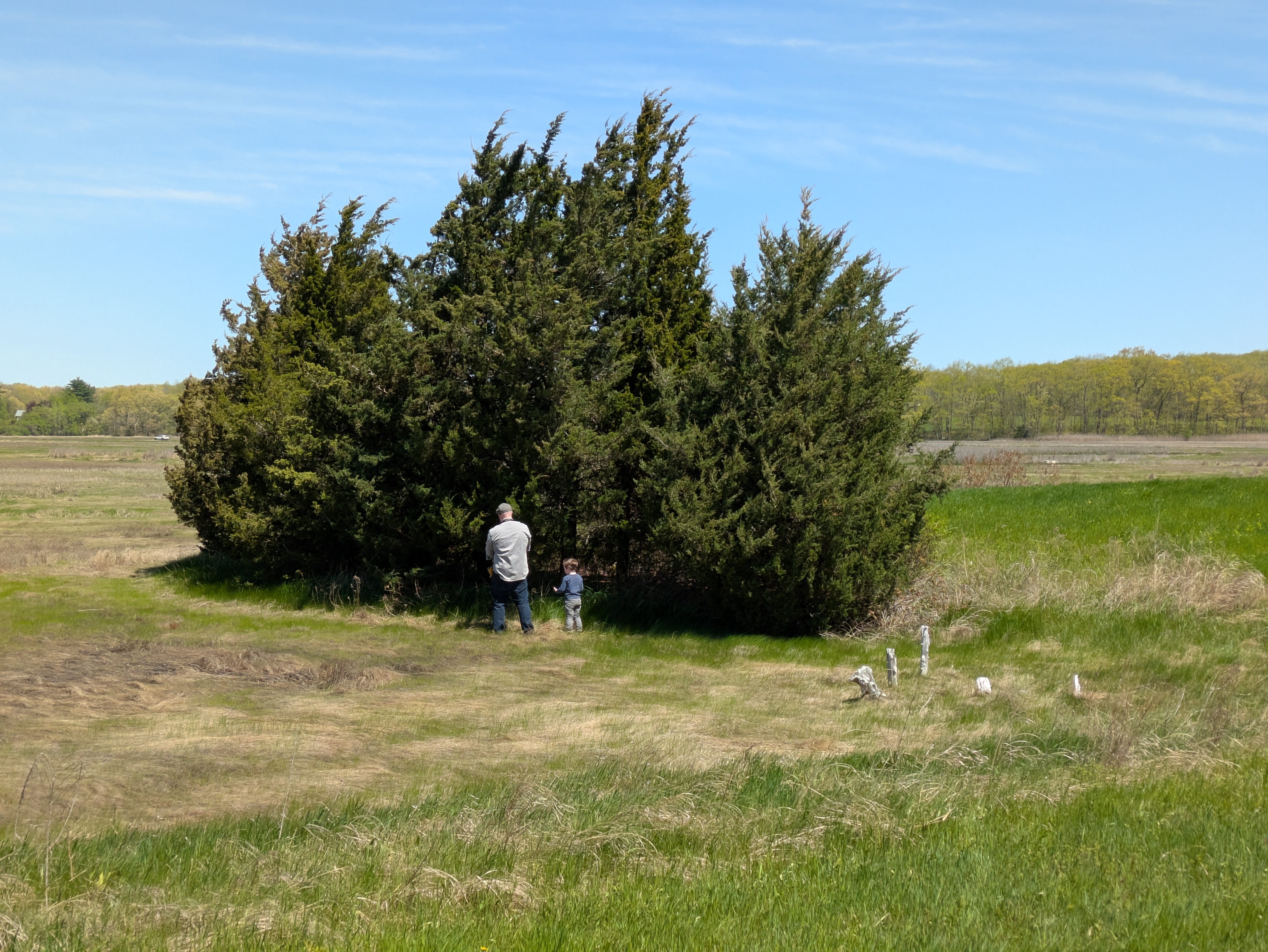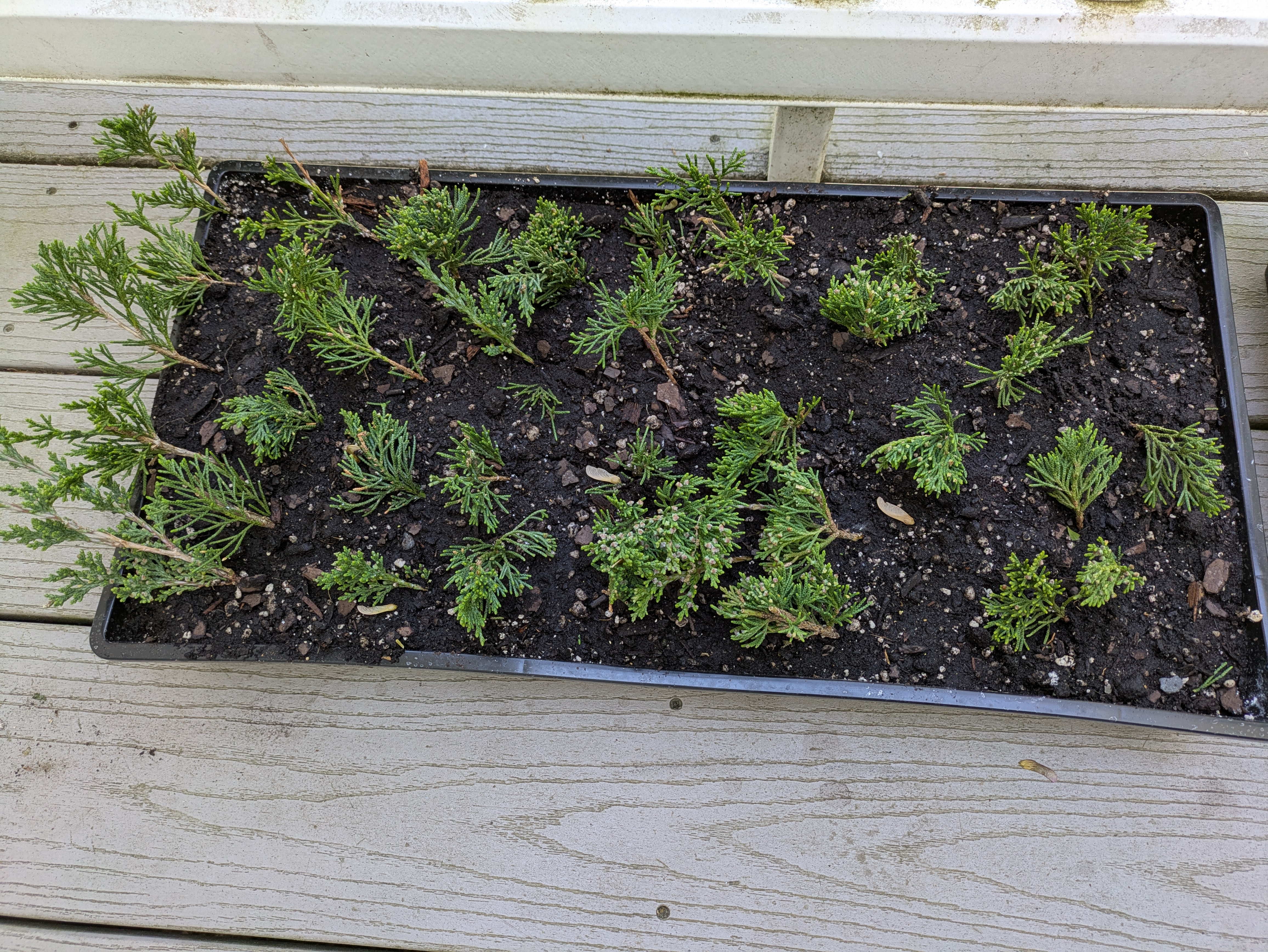Little River Redcedar Cuttings
I’ve recently watched a number of videos about making cuttings to eventually grow into Bonsai, especially those by Herons Bonsai who has made several videos on the topic including some specific to juniper. Although it seems most people take cuttings of juniper in the fall when new growth has become more “woody”, I found several sources saying that it is possible to take them in the spring, the key is that you want the weather to be mild, not the heat of summer and especially not the freezing cold temperatures of winter. Given that summer is just around the corner I thought it prudent to head out as soon as possible.
I love conifer bonsai, and junipers seem to be much more forgiving than true cedars which are more forgiving than pines. I remembered a quote from Yelle, a bonsai artist from the Netherlands with an excellent Youtube Channel, who said that you can make bonsai out of practically anything, but local species which thrive in your environment are a great place to start.
I’ve made several paintings of the Eastern Redcedars (which are technically junipers) at the edge of Little River Pasture in the marshes of Newbury, Massachusetts, and they were the first trees that came to mind when I decided to make cuttings. Although Redcedar are not considered ideal for bonsai for many reasons; they grow long and leggy, their foliage stays needly for a long time, they’re prone to have droopy foliage in pots, and they can be difficult to shape with wire, I don’t really care because I like them, they’re local, they have sentimental value, and I’ve seen some really nice redcedar bonsai, especially upright informals.
We set out in the morning on Mother’s Day and I took six branches total from three different trees in the same grove where the pasture meets the marsh. I wrapped the end with plastic damp papertowels and placed them in a bag which I think placed into a bucket of ice for the ride home. Shortly after arriving home I broke down the branches into “cuttings”. Juniper cuttings must have a “heel”, ideally have the diameter of a matchstick, though people have had limited success with branches as thick as a pencil, and be between three and six inches in length.
I filled three inch deep mesh bottom seedling trays with a combination of growers mix compost and a well-draining potting soil made from a mixture of perlite, coconut coir, and pine bark. I worked by pulling a cutting from a branches by hand to create a heel, cleaned the heel by snipping off the excess bark tag, removed the foliage from the bottom 2/3rds of the cutting, and I cut the growth tip before dipping it in fungicide and then dipping the end in Hormex #8 (.8 IBA) rooting powder. I then planted each cutting into the seed trays in rows at a roughly 45 degree angle to get the cutting nice and deep into the soil where it will be able to stay warm which will encourage root growth. Hopefully in a few months roots will emerge and by next year they will be ready to plant in larger pots for the next stage of their growing journey.

